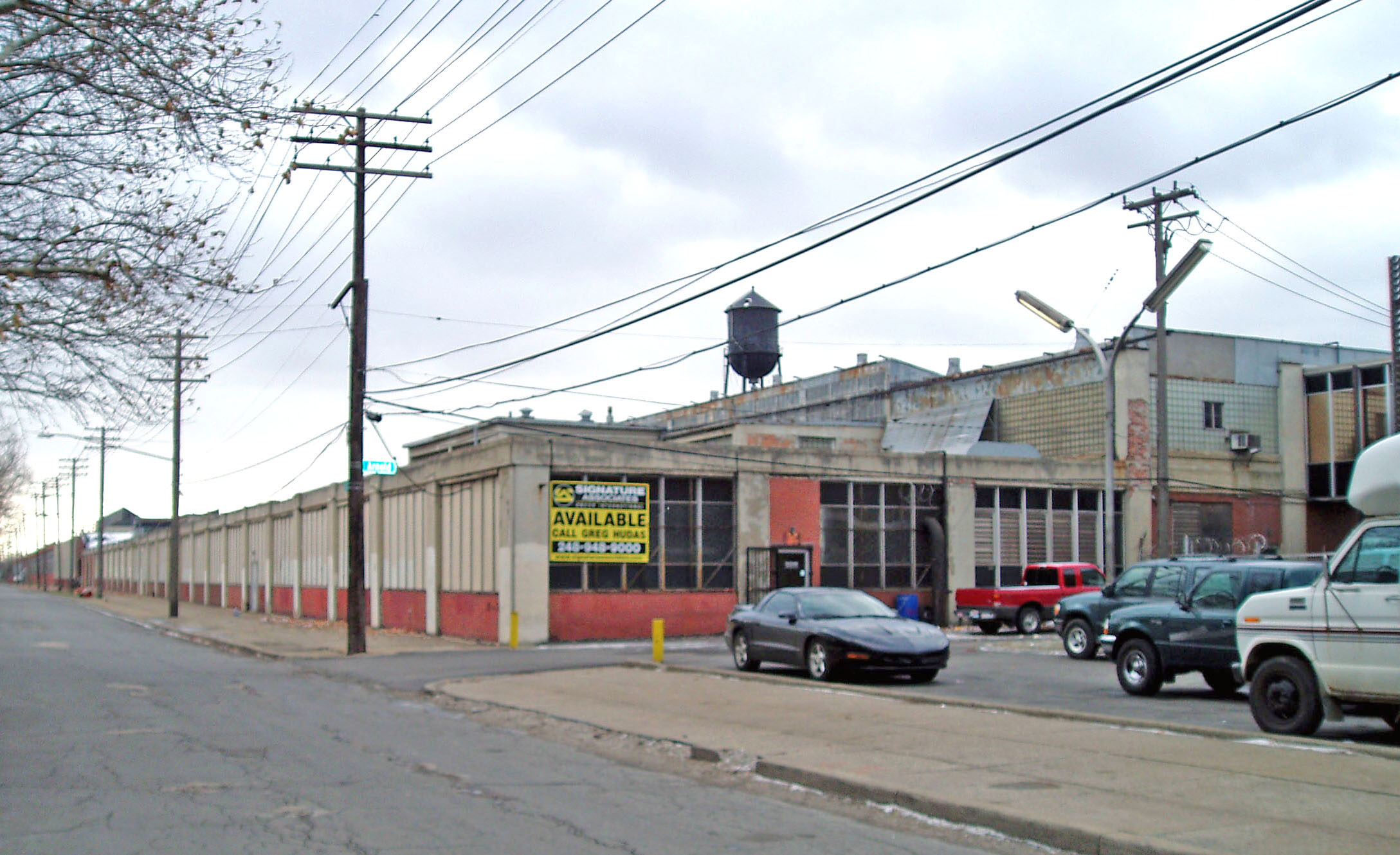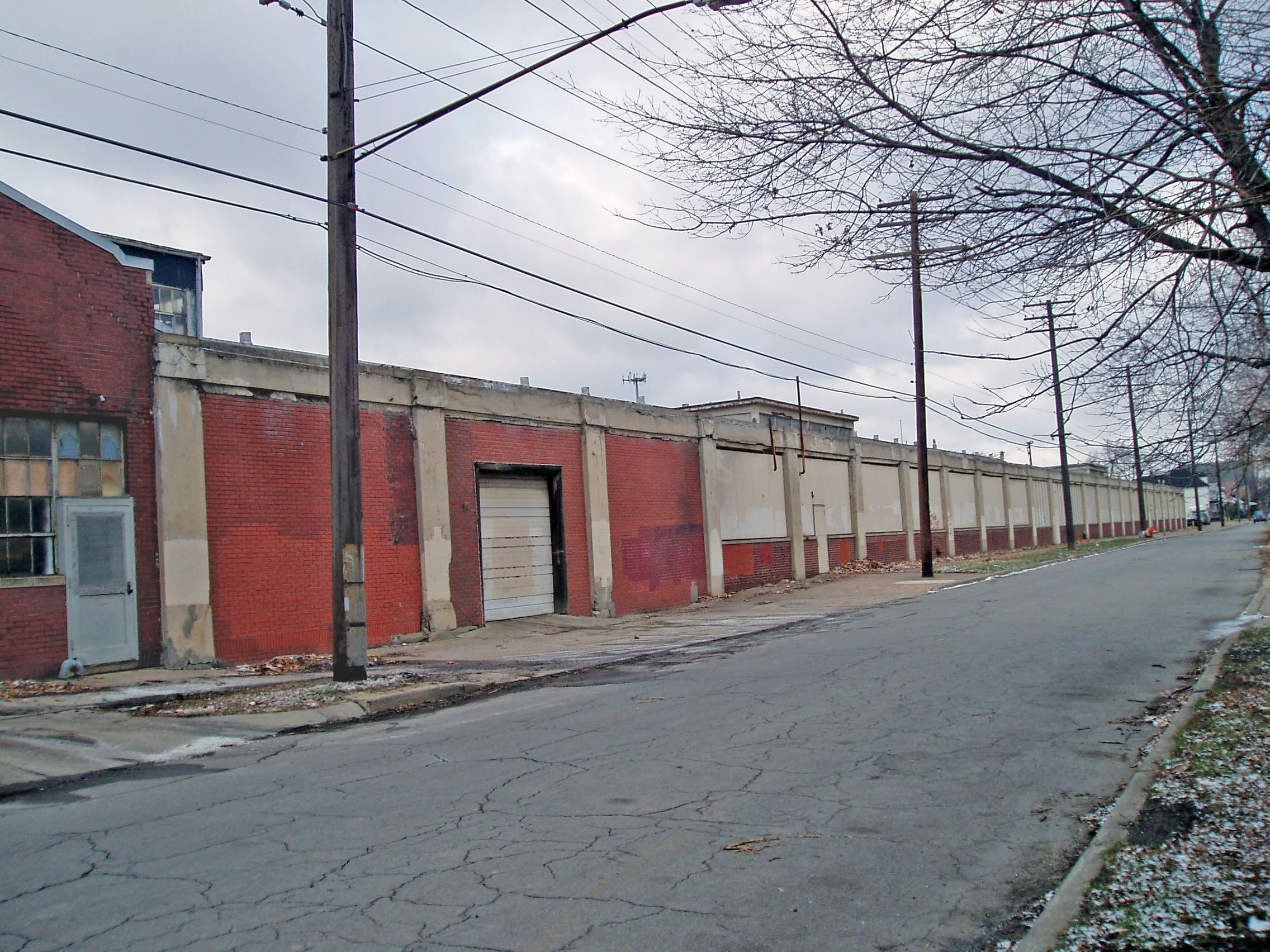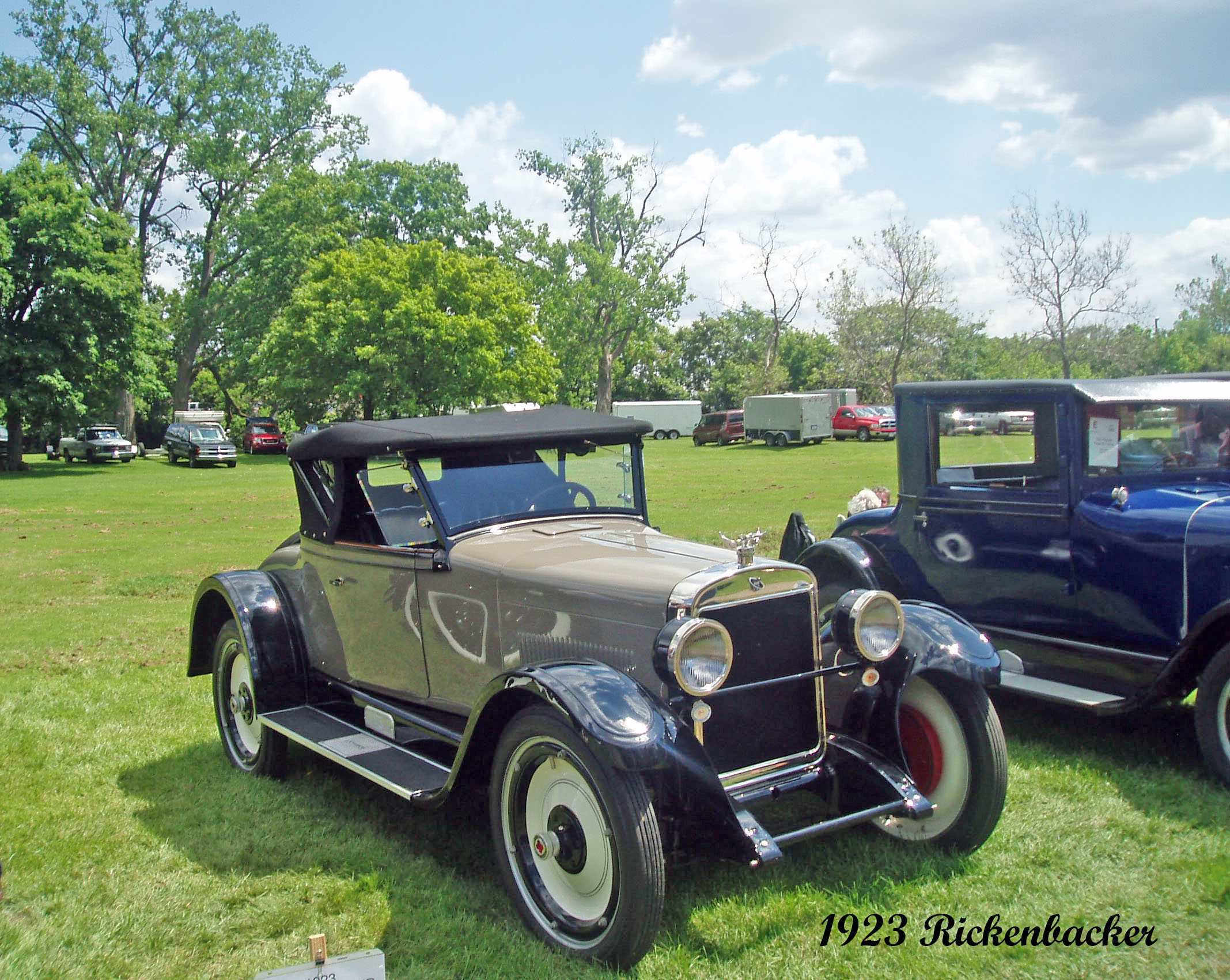

Edward Rickenbacker, a widely acclaimed American
hero, used his fame and knowledge of racing cars to create an innovative
Detroit vehicle firm but, alas, one
that survived for only a few years. Rickenbacher was born in Columbus, Ohio
in 1890 to German- speaking Swiss immigrants. His family was impoverished
and the family’s status took a terrible turn for the worse when his
father, a construction worker, was killed at work in 1904. Rickenbacher dropped
out of school at age 14 to support his large family. While in his teens,
he was employed by the Federal Glass Company, Buckeye Steel Casting and then
in the machine shops of the Pennsylvania Railroad in  Columbus. Fortunately
for him, he got a job with the Frayer-Miller Automobile Company located in
Columbus and there he began to show his remarkable abilities. This firm produced
at least a few cars in 1908.
Columbus. Fortunately
for him, he got a job with the Frayer-Miller Automobile Company located in
Columbus and there he began to show his remarkable abilities. This firm produced
at least a few cars in 1908.
Rickenbacher’s boss, Lee Frayer, raced cars in the Vanderbilt Cup Race
on Long Island—one of the most prestigious auto races in the United States
at that time. Even though he was only 16, Rickenbacher accompanied Frayer to
the 1906 Vanderbilt Cup as a mechanic. By 1910, Rickenbacher held a job as
the branch manager for Firestone Tire in Columbus. He also began racing Frayer’s
cars. Rickenbacher set a national speed record of 134 miles per hour at Daytona,
Florida and then drove one of Freyer’s cars in the 1911 Indianapolis
500. In 1912, began racing cars for famed auto designer, Fred Duesenberg. He
quickly became recognized as one of the most accomplished race car drivers
in the nation.
In 1916, Rickenbacher was apparently recruited by Britain’s Sunbeam auto
firm to race their cars in Europe. Other stories suggest that he was sent to
England to purchase excellent cars from Sunbeam to bring back to the United
States for racing. Once he got to England, he realized that the British were
fighting the Germans and saw that as an opportunity. At this time, military
strategists presumed that aircraft would revolutionize warfare so the Germans,
the British and the United States invested heavily in the development of planes,
although the technology was primitive. The huge plant that stood at West Warren
and Livernois until it was razed in 2003—a National Historic
Landmark—was
built by Henry Leland to manufacture Liberty engines for this nation’s
World War I aircraft. Rickenbacher approached British authorities and volunteered
to organize a team of auto racers who would fly planes for what later became
the Royal Air Force. The British government rejected his offer, perhaps assuming
that he was acting as a German agent. Eddie Rickenbacher returned to the States
but, as soon as this country entered World War I, he enlisted for service.
Simultaneously, he anglicanized his name by changing it from Rickenbacher to
Rickenbacker. He was assigned to serve as chauffer driving Hudsons for General
Pershing but his interest in flying persisted. He contacted, General Billy
Mitchell—the father of the United States air force—and volunteered
to fly the fragile planes then in use. By the end of World War I, Eddie Rickenbacker
was acclaimed as an ace and credited with shooting down a record 26 Luftwaffe
craft. The French awarded him the Croix de Guerre and the United States conferred
the Congressional Medal of Honor.
Returning from the war, Rickenbacker retired from auto racing, but maintained
a strong interest in the vehicle industry. In 1919, he decided the nation
needed a new car with three distinguishing features: high horsepower, a low
center
of gravity to increase passengers comfort and four wheel brakes for safety.
He proposed this idea to his friend, Harry Cunningham, who was closely linked
to Detroit’s auto barons. Barney Everitt had been successful in Detroit’s
auto industry since the turn of the century but was, at that time, “between” auto
companies although he had a management role in several Detroit firms linked
to the auto industry. Cunningham put Barney Everitt in contact with Rickenbacker.
Everitt, who had founded a half a dozen or so auto firms, was interested in
the concept for a new and different car. He talked his former partner, Walt
Flanders, out of retirement to join a new firm that would produce Rickenbackers.
Apparently they proposed making Eddie Rickenbacker president of the firm, but
Rickenbacker preferred to serve as Vice-President for sales, perhaps because
he had a variety of other interests. Thanks to Rickenbacker’s fame
and the previous accomplishments of Barney Everitt and Walter Flanders, they
quickly
raised five million dollars in 1921.
Three prototype models were assembled in Detroit
that year and shipped to New York for the January, 1922 Auto Show. Apparently,
a touring
car, a sedan and
a coupe were shown, powered by six-cylinder, 58-horsepower engines. Many
potential customers signed up to purchase the extremely attractive,
low slung, high horsepower
Rickenbackers. Everitt, who was also in the auto body business with Walter
O. Briggs, had plants available in Detroit, but the Rickenbacker vehicle
seemed destined for such great success that the owners decided to build
a large plant
that could turn out 200 cars every day, or at least 50,000 annually. This
is the plant that you see pictured. This was a seriously flawed decision
since
the firm could not fill the many early orders they had. By the time, the
plant was ready to produce for the mass market; the appeal of the innovative
Rickenbacker
had cooled.

The original Rickenbackers did not have four wheel brakes since his collaborators
assumed that customers were not ready for that development. It did incorporate
Rickenbacker’s idea of using flywheels at both ends of the crankshaft
to provide smoother power—an idea not copied by other firms. Eddie
Rickenbacker eventually convinced his collaborators that the public would
buy cars with
four wheel breaks and, starting in 1924, his cars were equipped with them.
Competitors who sold mid priced and low priced cars argued that four wheel
brakes were dangerous since they might put the car into a skid or, if they
worked as designed, would throw passengers into the dashboard. Studebaker
even published anti-four wheel drive advertisements. Duesenbergs used four-wheel
brakes prior to Rickenbackers, and Packard introduced them at about the same
time. Eventually, all wheel brakes were adopted by every producer but strong
criticisms of this innovation may have slowed Rickenbacker sales in the mid-1920s.
Rickenbacker flew around the country signing up dealers and successfully
promoting sales, but financial and managerial difficulties would quickly
take the life
of this promising firm. Walter Flanders had moved to an estate on the James
River in Virginia after his successful automobile career in Detroit. Everitt
convinced Flanders to come out of retirement to serve as president of Rickenbacker
but, he was killed in an automobile accident on June 16, 1923. That was one
problem for Rickenbacker. The firm depended heavily upon suppliers for component
parts and this may have also limited their ability to produce and deliver
cars. Then—as now—auto firms sometimes financed their own
operations by greatly delaying payments to suppliers.
For 1924 Rickenbacker introduced a Vertical 8 Super fine model with an L-hear
268 cubic inch engine. Apparently, this was an exceptionally well designed
and attractive car, but it was not a financial success, so its production
was terminated. A recession in 1925 cut Rickenbacker sales and led to an overstock.
To sell those excess cars, Barney Everitt, decided to reduce the retail price
of the Rickenbacker while holding the wholesale price fixed. The price cut
came out of the dealer’s profits angering dealers and making them lukewarm
about selling Rickenbackers.
An attractive new “boat-tail” model with a variety of new safety
features was introduced for 1926 with the substantial price tag of $5,000.
This car could approach 100 miles per hour and, unlike other sports cars of
its era, could seat four. However, it was not a financial success and, perhaps,
fewer than 20 of these “boat-tail” Rickenbackers emerged from the
Cabot Avenue factory.
Everitt owned many different firms producing auto components and decided
to make changes in the capitalization and financial organization of the Rickenbacker
Motor Company. Eddie Rickenbacker, in September 1926, strongly objected to
the financial and organizational changes made by Barney Everitt and quit
the firm, but was personally indebted for $250,000. Barney Everitt presumed
that
the company could continue without the founder’s involvement, but sales
declined. New models were introduced for 1927, but financial problems troubled
the company, problems that were not solved with the introduction of the new
models. Production ended in 1927 with a total production of 34,500 Rickenbackers.
Auto historians, I infer, think the Rickenbacker presented customers with
attractive engineering innovations that were later adopted by most manufacturers
but,
due to a variety of managerial errors, the firm survived just one-half dozen
years.
Eddie Rickenbacker purchased the Indianapolis Motor Speedway shortly after
he left the auto firm in 1927 He eventually paid his share of the auto firm’s
debts. In 1925, Congress passed a law allowing the Postal Service to charge
more for the rapid delivery of mail by air. As early as 1925, Rickenbacker
was involved with airlines that sought to capitalize upon this opportunity.
However, planes were so unreliable that few, if any, airlines earned profits
by flying mail. By the early 1930s, Rickenbacker became president of Eastern
Air Lines and by late 1934 that firm’s financial success was assured.
They proved they could reliably deliver mail from New York or Chicago to
Miami on an over night schedule with flights taking no longer than nine hours.
Rickenbacker
also set at least two speed records for cross-county flight, going from coast-to-coast
in 13 hours in a DC-2 in 1933, and then an hour faster in the DC-3 the following
year.
Similar to Detroit native and aviation enthusiast, Charles Lindberg, Eddie
Rickenbacker strongly opposed the entry of the United States into World War
II. But after Pearl Harbor, Rickenbacker returned to service, although not
as a fighter pilot. Secretary of War Stimson recognized his diplomatic skills
and used Rickenbacker to convey messages and intelligence from the United
States governments to foreign leaders. He also visited Army Air Forces bases
throughout
the world to build morale. Flying across the Pacific in that conflict, Rickenbacker’s
party had to ditch their plane. They survived in a raft for 21 days.
After V-J Day, Rickenbacker returned to run Eastern Air Lines. During World
War II, major engineering efforts were made to develop jet planes. It was
widely recognized that jet planes would eventually have a tremendous advantage
over
piston craft in safety, cost of operation, speed, passenger comfort and distance
traveled. At Eastern, Rickenbacker made a mistake you would not expect of
a person interested in engineering innovations. He decided to use Eastern
Air
Lines capital to purchase piston planes. So as competitive airlines introduced
jet planes in the late 1950s, Eastern was stuck with a fleet of new but obsolete
planes. He lost his job as chief operating officer at Eastern in 1959.
Rickenbacker had always been an outspoken conservative on political matters.
We think of the 1960s as the Civil Right decade, but there was also a vocal
conservative movement with a thriving John Birch Society. Indeed, conservatives
in the Republican Party succeeded in nominating Barry Goldwater for the presidency
in 1964, a senator who voted against the Civil Rights Act that is now seen
as among the most significant laws enacted last century. Eddie Rickenbacker
was a very popular speaker on the conservative circuit. This was an era in
which political conservatives were not aligned with evangelical Christians.
Rickenbacker died at age 83 in 1973.
After the Rickenbacker Motor Company tanked, Everitt sold the impressive
plant that you see above to Walter O. Briggs of the Briggs Body. Apparently
Barney
Everitt joined Walter Briggs to establish a Verville Aircraft Company that
was housed in the Cabot Avenue plant. Everitt served as president of Verville.
They produced a few planes but than became a casualty of the Depression,
ceasing business in 1932.
There are many comprehensive biographies of the interesting and accomplished
Edward Rickenbacker, but most of them devote only a few pages to the Rickenbacker
Motor Company. Indeed, at the time he was sales manager of his own auto company,
Rickenbacker was involved in numerous other businesses. So far as I know,
no book is devoted to a description of the Rickenbacker Motor Company. There
is
a very active club of people who now own or are strongly interested in Rickenbackers.
Their website is listed below. You will find an extensive amount of interesting
information at that website including a marvelous array of pictures showing
the actual manufacturing of Rickenbackers in the 1920s.
Architect: Unknown to me
Architectural style: Post World War I Industrial
Date of Construction: 1922
City of Detroit Designated Historic District: Not listed
State of Michigan Registry of Historic Places: Not listed
National Register of Historic Sites: Not listed
Website for the contemporary Rickenbacker Owners club: www.rickenbackermotors.com
Use in 2007: Factory building
Photograph: Ren Farley
Description Prepared: October, 2007